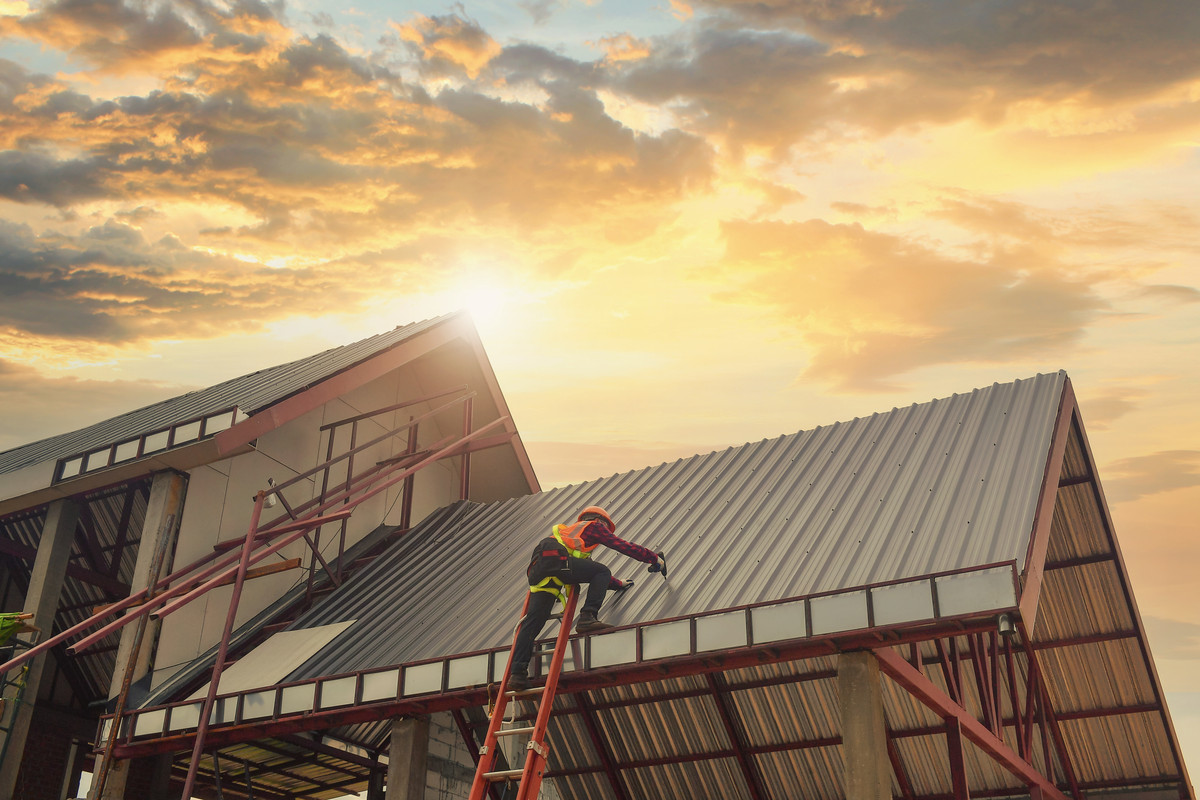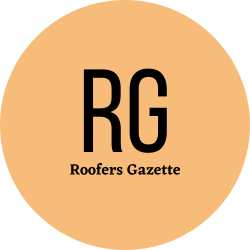Metal Roofing and Its Advantage
by siteadmin

If you're thinking about getting a new roof for your home, you've probably wondered what metal shingles are. Metal roofing has several benefits, including its resistance to wind and fire, impermeability, durability, and flexibility. Moreover, it's a component of a building's envelope. Here's a closer look at the advantages of metal roofs. And if you're unsure whether they're right for your home, here are some tips to make the decision.
Steel Roofing
The advantages of steel roofing are many. This metal roofing system is resistant, durable, impermeable, and part of the building's envelope. Its impermeability and resistance to fire, moisture, and other factors make it a desirable choice for roofing systems. Steel roofing is an excellent option for a wide variety of building applications. Read on to learn more about the advantages of steel roofing. Here are some of the main benefits of steel roofing.
Unlike asphalt shingles, steel roofing is a long-term investment. While asphalt shingles may last for twenty years, steel roofs will still look new for decades. In addition, steel roofing is 100% recyclable. Metal roofing can also be used to help the environment. Moreover, it is green. Its longevity makes it an ideal choice for commercial and residential applications. Contact a local steel roofing repair contractor if you're in the market for a new roof.
Steel roofs last 40-70 years compared to asphalt-based roofing, which is much longer than its asphalt-based counterpart. Moreover, steel is resistant to rust and fire, and it can withstand winds of 120 mph. Furthermore, steel is also an effective insulator and seals out moisture. So, steel roofing can be a great choice for a residential building. When properly installed, it can provide your building with the energy efficiency and durability it needs.
Unlike aluminum roofing, steel roofs can be recycled. Aluminum roofing is recyclable but more prone to dents and bends. Steel is the more expensive option, but it is also highly durable and resistant to rust. If you're concerned about the environmental impact, you can consider an aluminum roof. Aluminum, Copper, and zinc roofs have a shorter lifespan. However, the most important benefit of aluminum roofing is its cost-effectiveness.
Aluminum Roofing
One of the many benefits of aluminum roofing is its recycled content. In most cases, the materials used to manufacture aluminum roofing are made from recycled material. Hence, they are easy to install and work with on-site. However, it would be best if you remembered that you can also find roofing materials made from other metals, such as Copper and zinc. So, before buying a roofing material, research its cost first. Aluminum roofing materials have a typical cost per square meter.
When you buy aluminum roofing, it is important to consider the material's color. Choosing a color that matches the overall ambiance of the building is vital. Darker colors absorb more sunlight, making them warmer, but they also fade more quickly. In a sunny climate, a lighter color is best. For areas with cooler temperatures, opt for a darker color. Otherwise, a lighter color will make your home look cold and unappealing.
Compared to other materials, aluminum roofing costs less than asphalt roofs. On average, shingles or panels made of aluminum cost $265 to $375 per square foot. Prices will vary depending on the size and shape of your roof and the grade of aluminum. Depending on the type of aluminum and the roofing material, a roof made of aluminum can cost between $9,000 and $17,000, including installation costs. It would be best if you remembered that aluminum roofing is a green material. It is made from 95% recycled aluminum.
Aluminum roofs are a good option for homeowners with moderate to high-pitch homes. As an added benefit, aluminum roofs are highly resistant to corrosion. However, because they are relatively thin, they are also more expensive than steel. Because of the price difference between aluminum and steel, the cost of aluminum roofs can fluctuate. In most cases, however, aluminum roofs are used in thinner thicknesses than steel. So, it is important to choose a roof material wisely.
Copper Roofing
If you want your metal roof to have a copper look, you can choose a Copper Roofing on metal roofs. This type of roof offers a beautiful blend of design and durability. In addition, it complements any style of building. The use of Copper on metal roofs has long been rooted in tradition. Copper roofs are a wonderful choice for your home's aesthetic appeal, as they are highly durable and offer outstanding resistance.
Several factors determine the lifespan of a copper roof. Copper is susceptible to atmospheric oxidization caused by water, light, and other pollutants. As the Copper oxidizes, the color changes from Copper to brown to green. This color change can stain other materials, especially painted surfaces and masonry. The process is called verdigris. It is beneficial to Copper because it extends its life by protecting it from corroding.
One of the most significant factors that affect the cost of copper roofing is the size of the roof. For a 1,000-square-foot roof, copper roofing will cost you approximately $21,000, while a 3,000-square-foot roof may cost $62,000. Slightly more than half of a roof's total square footage can be made of recycled Copper. This means you'll reap the benefits of both recycled Copper and new metal.
Once you have decided which type of Copper Roofing on metal roofs is right for your home, you can get it installed by a local roofing contractor. But if you don't have the skills, you can even hire a roofing contractor. Of course, make sure to choose a reliable and experienced roofing company. After all, Copper is one of the most expensive metals on the market, so you'll want to make sure that you're not making a mistake.
Zinc Roofing
Zinc is a non-corrosive metal that benefits from the aging process. Patination transforms zinc into a lighter gray or blue hue. Its high resilience also makes it ideal for roofs. While metal roofing can scratch and dent easily, zinc retains most of its original energy content. It is also recycled and can be reused many times without compromising quality. In addition, a zinc roof can last up to a century, making it a sustainable option for any home.
A zinc roof is more expensive than other metal roofing materials. However, if you compare the cost of installing a zinc roof to other roofing materials, you'll discover it's well worth the investment. The price of installing zinc roofing may seem prohibitive initially, but many homeowners find it well worth the investment. This material is fully recyclable, and many advantages are worth the cost. You'll be saving energy and money over time, too.
Zinc strips are not as effective as other types of roof coatings. The strips must be applied under every ridge cap and every 15 feet down the roof. Because the strips are thin, they tend to break easily, which causes clanging sounds. The strips also look ugly on medium-sized modern hip and valley roofs and can't keep moss away. And they require frequent replacement, which costs both time and money.
Although zinc roofing has been used for centuries in Europe, it was only introduced to the U.S. market in the 1990s. Zinc is a natural weathering material that can become susceptible to premature corrosion when exposed to water. To combat this problem, manufacturers have devised several methods to prevent water from penetrating the backside of the zinc panels. In addition to incorporating ventilation space under the boards, these systems allow air to circulate under the zinc panels.
Reflective Metal Roofing
Whether you're replacing a worn-out roof or you'd like to add a new, energy-efficient roof, reflecting metal roofing may be a great option for your home. While many people are skeptical of the high price tag of metal roofs, there are many benefits to reflective metal roofing. In addition to lowering your heating bills, these roofs look great. And, because they reflect sunlight, they reduce the amount of heat your home retains.
Choosing the right color for your home is crucial, but you can find reflective metal roofing in all shades. White has the highest reflectivity of all colors, while lighter off-whites, grays, and taupes are less reflective. Black is the least reflective and is generally regarded as a low-cost choice. However, if you're in a hot climate, you can expect to save up to 70% on energy costs by installing reflective metal roofing.
Other benefits of installing reflective metal roofing include lowering your energy bills. During summer, a high-quality reflective metal roof can save up to 40 percent of your cooling bill. And, since it can increase the value of your home, you'll likely get your money's worth. Of course, you'll need to figure out how much unique roofing costs you'll incur before deciding. You can make a more informed decision once you know the cost of reflective metal roofing.
Another benefit of reflective metal roofing is that it improves the resale value of your home. Some homeowners have reported recouping 95.5% of their roofing costs after replacing old roofs. This is because of their cool pigments and reflective metal paints. The cool pigments on the metal roof will lower the surface temperature. It also improves the beauty of the roof. The result? A cool roof that is both attractive and energy-efficient.
CATEGORY: Roofing
TAGS: residential roofing, roof repair, roofing company, roofing contractors, roofing services
If you're thinking about getting a new roof for your home, you've probably wondered what metal shingles are. Metal roofing has several benefits, including its resistance to wind and fire, impermeability, durability, and flexibility. Moreover, it's a component of a building's envelope. Here's a closer look at the advantages of metal roofs. And if you're…
Recent Posts
- Roofing Company Savannah Sheds Light on the Lifespan of Roofs: How Long Should a Roof Last?
- Choosing the Best Gutters for Your Jacksonville FL Home
- Choosing the Best Gutters for Your Chicago Home
- Exploring the Drawbacks of Duct Cleaning: Insights from Air Vent Cleaning Charlotte
- Sons of Monaco Painting Unveils the Ultimate Solution: Roll vs. Spray for Exterior Paint
